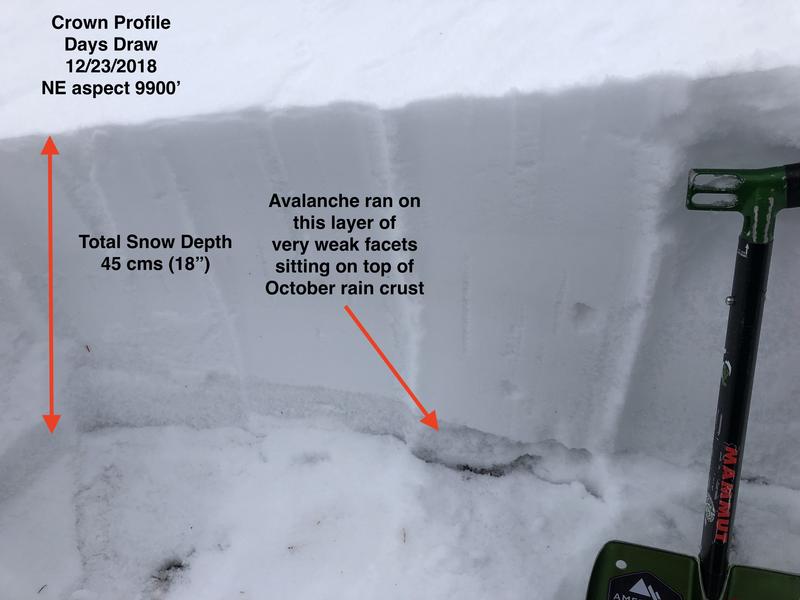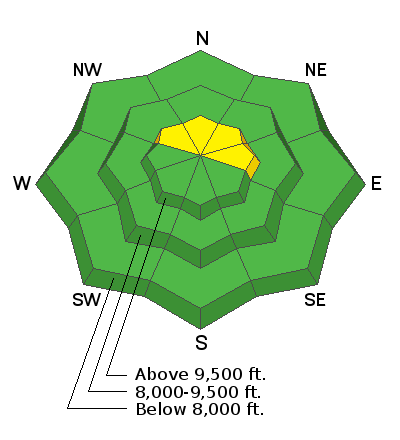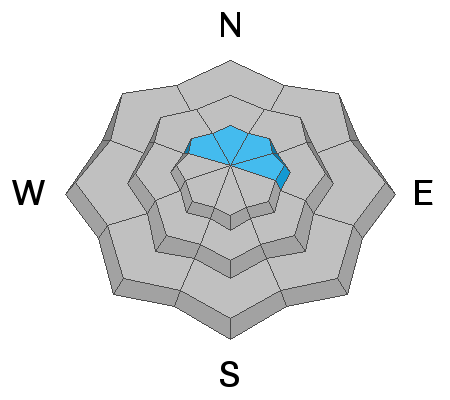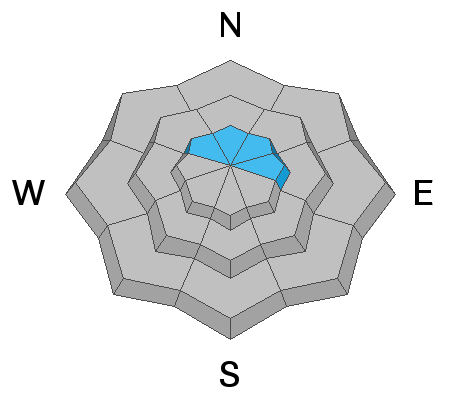Persistent weak layers of snow such as faceted crystals, depth hoar, and surface hoar can become very dangerous layers once they are buried. As its
persistent adjective suggests, these weaknesses can exist for a very long time (i.e. weeks, months, all season long.) Our current persistent weak layer of loose, sugary faceted snow down near the ground had its origins back in October when the mountains received their first significant snowfall. Although most of the snow melted out, on northerly aspects this snow remained, where it metamorphosed into a layer of weak faceted snow at the ground due to a temperature gradient in the thin snowpack (click
here to read more about this process). Complicating things, a rain event formed a crust, where we ultimately ended up with facets both above and below the crust.
By themselves, persistent weak layers are not an issue. They only become a problem once buried under new snowfall or wind-driven snow.
There are two reasons why some slopes have a thinner snowpack this season: (1) they avalanched previously (known as "repeaters") or (2) they are in areas that have received less snow. The slope in Days Draw appeared to have been a repeater from late November. The photo below shows the snowpack structure of the crown on the Days Draw avalanche, where the very weak layer of faceted snow down near the ground is clearly visible.

Generally, once a persistent weak layer becomes buried, it slowly adjusts to the load on top. In addition, the slab on top often gains enough strength where a rider cannot exert enough force on the buried weak layers. Without additional loading, the persistent weak layer gradually becomes dormant, but only to re-awaken with additional loading. We are likely in - or entering- a dormant phase, but the Days Draw avalanche surprised me because it did not undergo a substantial recent loading event, thereby suggesting this weak layer may not be entirely dormant.
From the best of our understanding, our persistent weak layer primarily exists on slopes above 9500' that face north and northeast, however weaknesses have also been reported on aspects facing northwest and east. The areas of greatest concern are on slopes that have a thinner snowpack, generally less than 3 feet.











